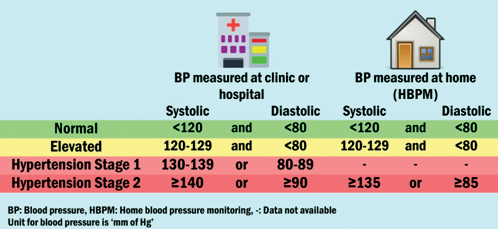Correspondence: Home Based Blood Pressure Monitoring in Indian Setting: A Consensus Document
Himel Mondal1, Sarika Mondal2, Shaikat Mondal3
1 Postgraduate Student, Department of Physiology, MKCG Medical College, Ganjam, Odisha, India.
2 Freelance Medical writer ORCID: 0000-0001-5039-9919, Odisha, India.
3 Postgraduate Student, Department of Physiology, Medical College and Hospital, Kolkata, West Bengal, India.
NAME, ADDRESS, E-MAIL ID OF THE CORRESPONDING AUTHOR: Mrs. Sarika Mondal, House No: 60, Ashok Nagar 4th Lane, Berhampur, Odisha, India.
E-mail: sarikaceo@gmail.com
Dear Editor,
We read a commentary in the January issue of your journal contributed by a group of expert authors [1]. It is now well established that Home Blood Pressure Monitoring (HBPM) helps in effective management of hypertension and it is well accepted by the patients [2]. Hence, the consensus document was the need of the hour for Indian medical practitioners.
In the article, Home Based Blood Pressure Monitoring in Indian Setting: A Consensus Document [1], under the sub heading “Normal Level of Home based Blood Pressure”, authors described that blood pressure obtained by HBPM below 130/80 (systolic over diastolic, here the symbol “/” is pronounced as “over”) mm of Hg has been considered as “normal” and 135/85 mm of Hg has been considered as “elevated”.
We found a different cut-off value in recent guideline [3], and in American Heart Association website [4]. Hence, we wanted to share that set of values to categorise adults according to their blood pressure. The blood pressure categories according to measurement at the clinic and HBPM are shown in [Table/Fig-1].
Blood pressure categories for diagnosis of hypertension.

From the values in [Table/Fig-1], it is evident that a value <120/<80 (the symbol “<” denotes “less than”) mm of Hg obtained from HBPM should be considered “normal” blood pressure and a value of 120-129/<80 mm of Hg should be considered as “elevated” blood pressure.
Hope this comparison would help the physicians to adapt appropriate strategies for management of hypertension of their patients according to necessity.
[1]. Expert group, Home based blood pressure monitoring in Indian setting: a consensus document Journal of Clinical and Diagnostic Research 2018 12(1):OA01-OA04. [Google Scholar]
[2]. Drawz PE, Abdalla M, Rahman M, Blood pressure measurement: clinic, home, ambulatory, and beyond Am J Kidney Dis 2012 60(3):449-62.10.1053/j.ajkd.2012.01.02622521624 [Google Scholar] [CrossRef] [PubMed]
[3]. Whelton PK, Carey RM, Aronow WS, Casey Jr DE, Collins KJ, Dennison Himmelfarb C, 2017 ACC/AHA/AAPA/ABC/ACPM/AGS/APhA/ASH/ASPC/NMA/PCNA Guideline for the prevention, detection, evaluation, and management of high blood pressure in adults Journal of the American College of Cardiology 2018 71(6):1269-324.10.1161/HYP.0000000000000065PMC5945323 [Google Scholar] [CrossRef] [PubMed]
[4]. Monitoring Your Blood Pressure at Home. USA: American Heart Association. [Updated 2017 November 13; cited 2018 February 01]. Available from: http://www.heart.org/HEARTORG/Conditions/HighBloodPressure/KnowYourNumbers/Monitoring-Your-Blood-Pressure-at-Home_UCM_301874_Article.jsp#.WWKTJrYlFdg [Google Scholar]